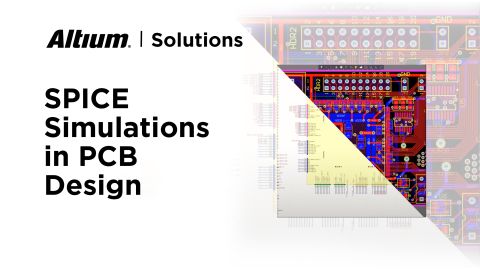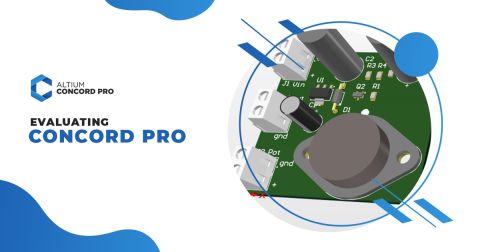Why You Should Be Using Concord Pro

Altium Concord Pro™ as a standalone product and brand name has been discontinued and the capabilities are now available as part of our Altium enterprise solutions. Learn more here.
Introduction
A journey of a thousand miles begins with a single step, or so the aphorism goes. I think it’s worth noting that the first step is the most difficult to take. In my experience, the best engineers suffer from a condition in which they, before even taking that first step, endlessly consider “What if?” scenarios. You know what I am talking about here... “What if we do this and something happens?” This issue is so prevalent in our industry that we even have a phrase for it: Analyses Paralyses. And as if that isn’t bad enough, some of us don’t like change at all. I understand having apprehension about change. Not knowing for sure how specific steps will impact a PCB project in progress is a significant and daunting concern. The biggest problem with analysis paralysis is that the result is that nothing changes, and that ultimately kills a company’s productivity.
Analysis Paralysis is especially true when dealing with a new software package, including the recent release of Concord Pro. The recent version has brought with it a deluge of interest and enthusiasm in such a phenomenal tool. But I must say, Altium hit this one out of the park. Not everyone shares in my excitement; recently, while speaking with several people who recently purchased Concord Pro, I was a bit surprised that many had not yet even opened the box. The most significant reason has been that they haven’t know where to begin with all of it, something which we will have to take up in another blog. But if you can move beyond analysis paralysis, you’ll soon find out that the first step is the hardest in getting started with Concord Pro—simply taking it out of the box and beginning to use it is a great start!
Why Should You Start Using Concord Pro?
Before we jump into what we are doing with Concord Pro, or how exactly we get started, there’s a simple question you should ask yourself: “Why?” Remember, whenever you ask the question “Why?”, you’re getting down to the motivation of the issue. I recently consulted with a company which brought me in to help get them set-up with Concord Pro. Everyone was so excited about jumping into the subject of getting started, but before we did that, we had a long conversation with everyone answering the question of “Why?” The answer to that question became the focal point of the entire day.
So why should you even consider Concord Pro? Naturally, this is a subjective question that won’t have the same answer for everyone. Every company has different needs and expectations. Take for example, a buffet (I usually relate everything back to food in some way). When you go to a buffet, there are things you like and things you don’t like. Similarly, Altium has created a smorgasbord of features and tools for the designer that is specifically there to help us. You’re free to choose what works for you.
If your company is anything like mine, then you know the business environment we work under is becoming more competitive every day. By now, we all know the great benefits of Concord Pro’s plethora of features, with its excellent component library management, its live dynamic data sourcing, its ECAD-MCAD collaboration and Component syncing capabilities, and its pricing. Still, I believe the answer to the question of “Why?” isn’t about the specific features or tools that are available, but rather the results you can expect when those features are in the hands of great designers. Results I‘ve seen firsthand.
#1. Reduced Time From Concept to Market
That is a big one, and a discussion we have all the time in my company. When you have a single source of truth, as you do in Concord Pro with your library and management of that data. You have fewer mistakes reducing the number of spins of a PCB you may need to do. One thing you can never get back is lost time in the design process. That time represents market share and money.
#2. Greater Collaboration Between Roles
As we will see, when we begin to set up the software that Concord Pro has some compelling collaboration tools. The PCB is more and more a Team Sport and requires a quick, smooth, and seamless transfer of PCB data between those roles for the PCB design and for the Mechanical considerations. Concord Pro handles that with no problem. With the ability to set up specific Roles with full control, with exactly what activities each role can conduct.
Furthermore, with the added ECAD to MCAD connector, those transfers are easily handed off to the mechanical folks. What are the results? The professionalism of the design team is increased exponentially because things are easier when taken up as a team.
#3. Tapping into the Dynamic World of Component Information
I once heard someone say that designing in today’s environment is “like nailing Jell-O against the wall”. So much of the data we use these days is dynamic and changing; component availability, sourcing, pricing, etc. Because of this, we have had to change our approach to how we design PCBs. But Concord Pro has got us covered there. With direct sourcing of components based on Manufacturer and Vendor, and with live availability and pricing, it could not be any easier.
Concord Pro’s Component integration into your PLM system has become a vital tool for us, which has now simplified and standardized the Component data over to whatever PLM system you may have. Also, I connected the two systems. And now, Concord Pro for PCB Designers and the PLM are not two separate entities—any changes made in one are updated in the other.
Conclusion
The question isn’t “Why should you be using Concord Pro?”, but “Why shouldn't you use Concord Pro?” Every day that you delay opening that box, is another day your company goes without the benefit of using those tools.
Practical Tasks
One of the things I wish to concentrate on with these blogs is to make them as practical as possible. With each of my blogs, I will be giving some practical exercises to help you in ultimately constructing a sturdy and sound library in Concord Pro.
- Analyze your company situation and environment and write down several reasons Why Concord Pro would be an excellent addition to your company.
- What are you expecting Concord Pro to provide for your company?
Would you like to find out more about how Altium can help you with your next PCB design? Talk to an expert at Altium and learn more about making design decisions with ease and confidence.









